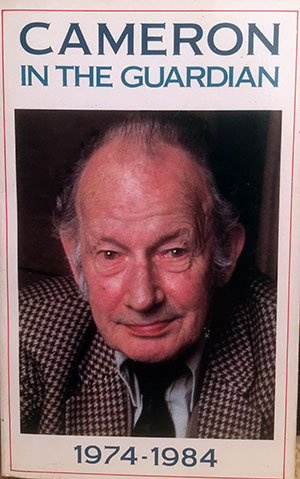Paul Hogarth’s ‘Drawings of Greece Today’……
 This is Paul Hogarth’s first book. Defiant People: Drawings of Greece Today was first published in the UK in 1953 by Lawrence & Wishart Ltd. It is an intriguing book in many ways but not least in the way we can chart the artist’s path creatively from his earliest published beginnings.
This is Paul Hogarth’s first book. Defiant People: Drawings of Greece Today was first published in the UK in 1953 by Lawrence & Wishart Ltd. It is an intriguing book in many ways but not least in the way we can chart the artist’s path creatively from his earliest published beginnings.
Hogarth went to Greece in the summer of 1952 and his subsequent exhibition in London of his drawings from his trip proved so successful that this collection found a publisher and Hogarth’s career in print took off.
There is little wonder his work was such a hit, having spent most of his Greek trip staying in a worker’s district of Athens he visited many of the old quarters of the capital which remained elusive to the post-war tourist. Hogarth’s journalistic bent shines through in his drawings, his socialist leanings are reflected in his choice of portraits; fishermen, factory workers, clerks, shoe men and downtrodden wives of prison inmates. Hogarth always sought to capture the real essence of a place and in this first book, he started as he meant to go along.
 In the infancy of the Cold War, Greece became its first victim. British and American planes used napalm B for the first time during the Greek Civil War beginning on the mountain of Grammos in 1949. The Allies, in the name of anti-communism and a democratic West put down a resistance movement in favour of the fascists who had given Greece over to the Nazis only a few years earlier. From 1946 to 1949, Greece suffered all over again and Hogarth managed to capture a country weary and worn from years of conflict.
In the infancy of the Cold War, Greece became its first victim. British and American planes used napalm B for the first time during the Greek Civil War beginning on the mountain of Grammos in 1949. The Allies, in the name of anti-communism and a democratic West put down a resistance movement in favour of the fascists who had given Greece over to the Nazis only a few years earlier. From 1946 to 1949, Greece suffered all over again and Hogarth managed to capture a country weary and worn from years of conflict.
His caricatures of the post-civil war people whose land had been left crushed and in ruins, financially worse-off than it had been after the German occupation tell us much. Simple pen and ink drawings, some done from memory, others captured quickly for fear of offence, Hogarth saw the division of a country through politics which would endure for years and that constant state of conflict is etched in the faces of those he drew.
 But Hogarth also looked at the landscapes and the architecture of a place and quite often he combined his love of place with people. Most of these drawings lack the detail and precision of his later work but they tell an essential and true story of life in post-war Greece. The pages are kept clean and simple, one line of text to accompany a drawing to give the book the feel of a sketch book. Constitution Square, opposite, with its American companies such as TWA in the background, Hogarth tells us how only a few Greeks have profited from the American occupation. Here Hogarth shows us the café society which is the preserve of the wealthy before taking us back to the realities of the everyday Greek: ‘A country whose history since ancient times has been one of continuous struggle against tyranny and oppression is not short of heroism’.
But Hogarth also looked at the landscapes and the architecture of a place and quite often he combined his love of place with people. Most of these drawings lack the detail and precision of his later work but they tell an essential and true story of life in post-war Greece. The pages are kept clean and simple, one line of text to accompany a drawing to give the book the feel of a sketch book. Constitution Square, opposite, with its American companies such as TWA in the background, Hogarth tells us how only a few Greeks have profited from the American occupation. Here Hogarth shows us the café society which is the preserve of the wealthy before taking us back to the realities of the everyday Greek: ‘A country whose history since ancient times has been one of continuous struggle against tyranny and oppression is not short of heroism’.
 This last drawing is of the wives and mothers queuing for hours at the prison in Averoff. After the Civil War, thousands were imprisoned and left for years whilst others were exiled to neighbouring islands. Hogarth captures the hardship and misery of these people in his own unique way. In his autobiography Hogarth wrote of his trip to Greece: ‘Through sheer necessity and constant practice, I began to acquire the resourcefulness of a pictoral reporter. I had to keep on interpreting what I was seeing, and I now occasionally brought of a drawing I could feel reasonably proud of’.
This last drawing is of the wives and mothers queuing for hours at the prison in Averoff. After the Civil War, thousands were imprisoned and left for years whilst others were exiled to neighbouring islands. Hogarth captures the hardship and misery of these people in his own unique way. In his autobiography Hogarth wrote of his trip to Greece: ‘Through sheer necessity and constant practice, I began to acquire the resourcefulness of a pictoral reporter. I had to keep on interpreting what I was seeing, and I now occasionally brought of a drawing I could feel reasonably proud of’.
This book along with the earlier exhibition was the springboard for his fascinating career and I value it highly in my collection of his books.
Paul Hogarth’s Bibliography can be found here
Paul Hogarth loved the Mediterranean, amongst many of his fine books I would recommend these for more of his work in that region:
Paul Hogarth and Lawrence Durrell
Paul Hogarth and Robert Graves
Categories: Paul Hogarth, Uncategorized







Thank you for the information. My father, a greek imigrant bought this incredible book in Melbourne probably in the 1950’s.My first images of Greece as a child were from this book and photos from a trip to Greece when l was a toddler in 1972. Greece in the 70’s was all about the same. Hogarth was a modern “fillelinas”, like Lord Byron.
LikeLike
Chris, welcome to the site and thank you for a great comment. I love his work, it struck a chord from the moment I first saw it. He left a remarkable legacy for us to enjoy.
LikeLike